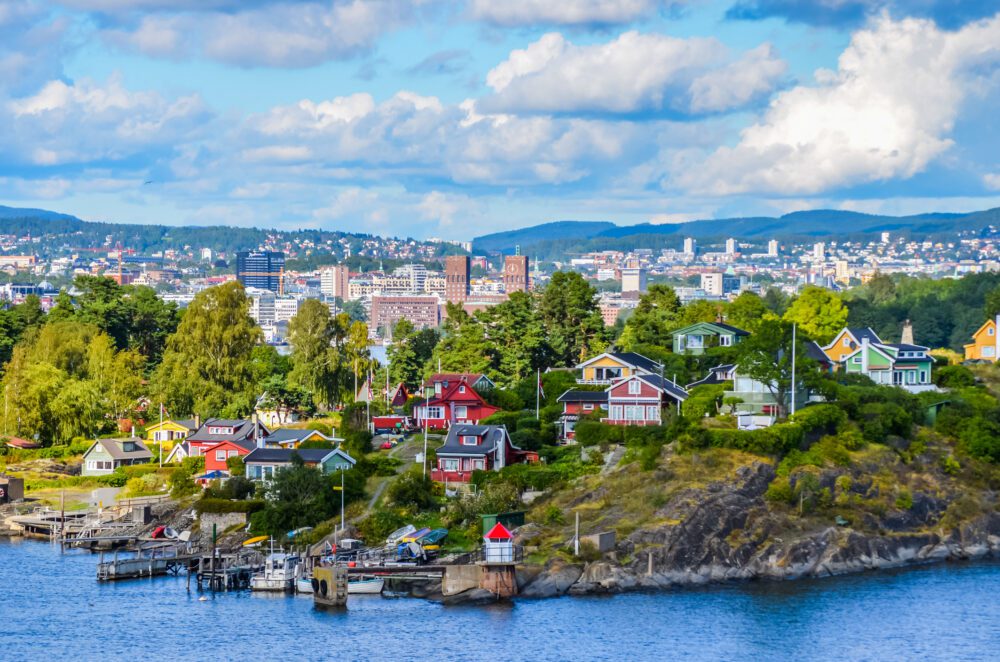
Introduction
Nestled amidst Norway’s breathtaking landscapes, Oslo stands as a vibrant metropolis brimming with history, culture, and Scandinavian charm. As the capital city of Norway, Oslo is a bustling hub of activity, offering visitors an array of unforgettable experiences. From its rich history dating back over a thousand years to its modern urban amenities and stunning natural surroundings, Oslo seamlessly blends tradition with innovation, making it an enticing destination for travellers from around the globe. As you embark on your journey to discover the best things to do in Oslo, prepare to be enchanted by its fascinating landmarks, cultural attractions, and vibrant atmosphere.
With a history steeped in Viking lore and medieval intrigue, Oslo offers a captivating glimpse into Norway’s past. Founded in the 11th century by the Viking king Harald Hardrada, Oslo has evolved from a small trading outpost into a dynamic capital city. Today, remnants of its storied past can be found scattered throughout the city, from the historic Akershus Fortress overlooking Oslofjord to the iconic Oslo City Hall, where the Nobel Peace Prize ceremony takes place annually. Yet, Oslo’s allure extends far beyond its historical significance, as the city embraces modernity with innovative architecture, world-class museums, and a thriving culinary scene. Whether you’re exploring its ancient streets, immersing yourself in its cultural institutions, or simply soaking in its scenic beauty, Oslo promises an exciting and enriching experience that captures the essence of Norway’s vibrant capital.
Table of Contents
Map of the Best Things to Do in Oslo
The Royal Palace

The Royal Palace in Oslo stands as an emblem of Norway’s royal heritage and architectural grandeur. Built in the early 19th century, the palace serves as the official residence of the Norwegian monarch and is a prominent landmark in the heart of the city. Designed in the neoclassical style by architect Hans Linstow, the palace boasts an impressive facade adorned with columns, statues, and ornate detailing. Visitors to Oslo can marvel at the palace’s exterior from the expansive Palace Square, where the changing of the guard ceremony takes place daily during the summer months. While the interior of the palace is not open to the public for regular tours, guided tours are available during the summer season, offering a rare glimpse into the royal residence’s opulent chambers, majestic halls, and priceless works of art.
When visiting the Royal Palace, be sure to check the schedule for the changing of the guard ceremony, a tradition that dates back to the late 19th century and is a popular attraction for visitors. Consider joining a guided tour of the palace during the summer months to learn more about its history, architecture, and royal residents. While exploring the palace grounds, take time to stroll through the tranquil Palace Park, which features beautifully landscaped gardens, sculptures, and scenic walking paths. Additionally, don’t miss the opportunity to capture photographs of the palace against the backdrop of Oslo’s skyline and the stunning surrounding scenery.
Karl Johans Gate
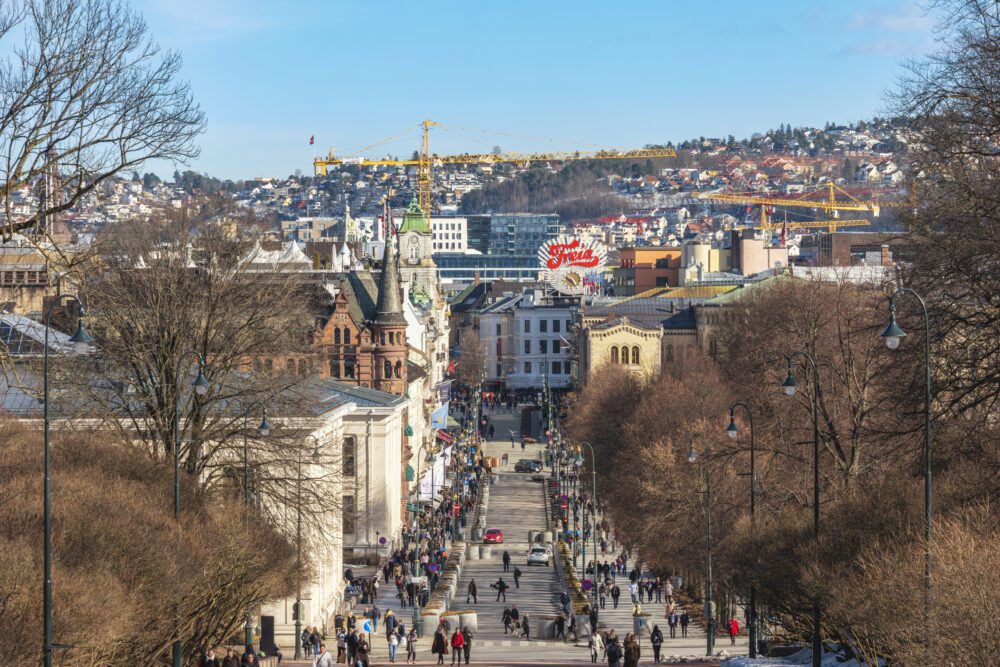
Karl Johans gate, Oslo’s main thoroughfare, is a bustling street brimming with history, culture, and vibrant energy. Named after King Charles III John, who reigned over Norway and Sweden in the early 19th century, this iconic street serves as a focal point for both locals and visitors alike. Stretching from the central railway station to the Royal Palace, Karl Johans gate is lined with an array of shops, cafes, restaurants, and cultural landmarks, making it a vibrant hub of activity throughout the day and night. Along its bustling sidewalks, visitors can admire a mix of architectural styles, from historic buildings dating back to the 19th century to modern structures that reflect Oslo’s contemporary flair.
Practical tip: While exploring Karl Johans gate, take time to visit some of its notable landmarks, including the Norwegian Parliament Building (Stortinget), Oslo Cathedral (Domkirke), and the National Theater (Nationaltheatret). Consider starting your stroll from the central railway station and making your way towards the Royal Palace, taking in the sights, sounds, and flavours of the street along the way. Don’t miss the opportunity to stop for a coffee or a bite to eat at one of the many charming cafes and eateries that line the street, offering a taste of Oslo’s culinary delights. Additionally, keep an eye out for street performers, musicians, and artists who often showcase their talents along Karl Johan’s gate, adding to the lively atmosphere of this iconic thoroughfare.
Oslo Opera House
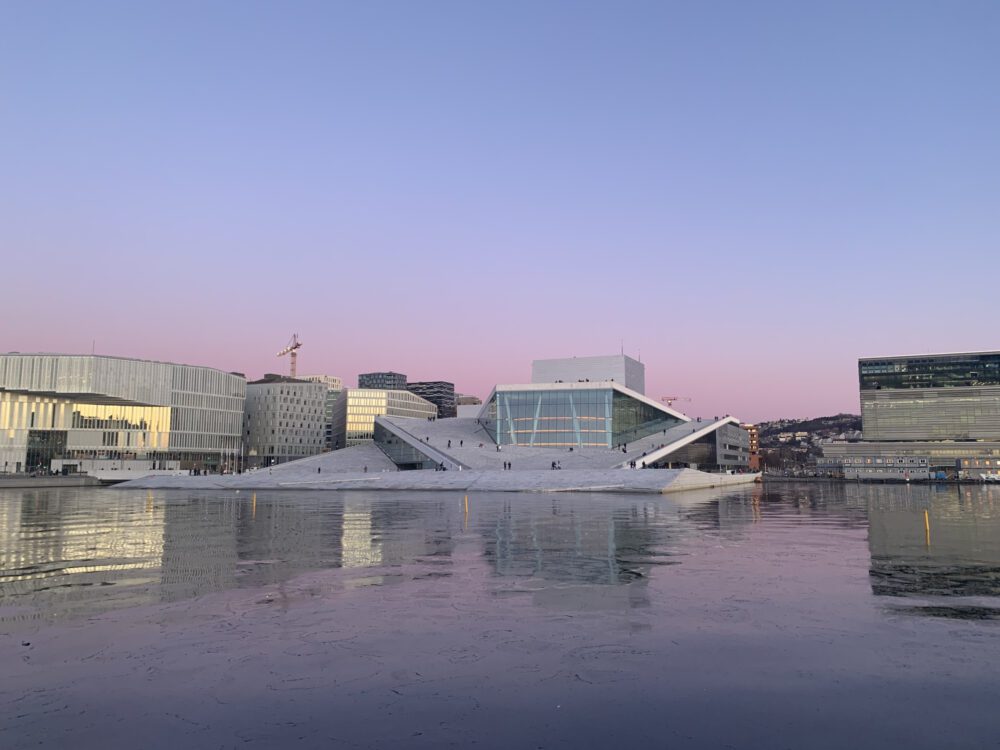
The Oslo Opera House stands as a modern architectural marvel along the city’s waterfront, embodying Norway’s commitment to innovation and cultural excellence. Designed by Norwegian architectural firm Snøhetta and completed in 2007, the opera house is renowned for its striking design, featuring a sloping roof that appears to rise seamlessly from the waters of Oslofjord. This iconic landmark serves as the home of the Norwegian National Opera and Ballet, showcasing world-class performances of opera, ballet, and classical music throughout the year. Visitors to the opera house can explore its sleek interior, which boasts state-of-the-art performance spaces, rehearsal studios, and exhibition areas, providing an immersive experience into the world of performing arts.
When planning your visit to the Oslo Opera House, consider booking tickets in advance for one of its acclaimed performances, which range from classic operas to contemporary ballet productions. Be sure to arrive early to take advantage of the opera house’s unique architectural features, including its rooftop terrace, which offers panoramic views of Oslo’s skyline and waterfront. Visitors are encouraged to walk on the opera house’s sloping roof, providing an opportunity to experience its innovative design up close and enjoy breathtaking vistas of the surrounding area. Additionally, consider joining a guided tour of the opera house to learn more about its architecture, history, and the behind-the-scenes workings of Norway’s premier cultural institution.
Munch Museum
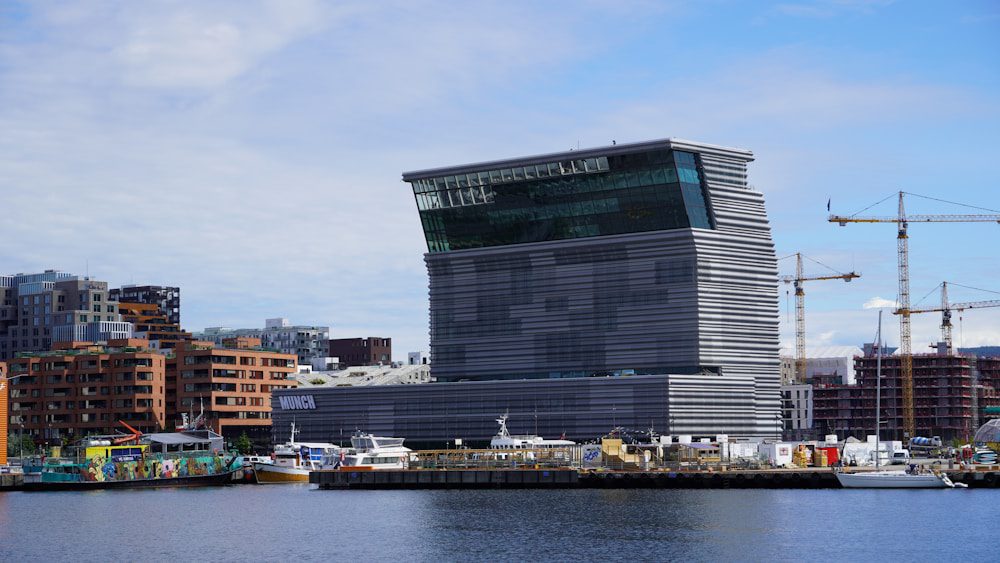
The Munch Museum in Oslo stands as a tribute to one of Norway’s most celebrated artists, Edvard Munch, whose iconic works have left an indelible mark on the world of modern art. Established in 1963, the museum houses the largest collection of Munch’s paintings, drawings, and prints, providing visitors with a comprehensive overview of his groundbreaking artistic career. Highlights of the museum’s collection include Munch’s most famous work, “The Scream,” as well as numerous other masterpieces that explore themes of love, death, and existential angst. In addition to its permanent collection, the museum hosts temporary exhibitions that showcase the work of contemporary artists influenced by Munch’s legacy, offering visitors a dynamic and engaging experience.
Practical tip: When visiting the Munch Museum, consider purchasing tickets online in advance to avoid long queues, especially during peak tourist seasons. Be sure to take advantage of the museum’s guided tours, which provide valuable insights into Munch’s life, art, and creative process. After exploring the museum’s galleries, take time to relax and reflect in the museum’s serene sculpture garden, which features outdoor installations and a tranquil atmosphere perfect for contemplation. Additionally, consider exploring the surrounding neighbourhood of Tøyen, which is home to a diverse array of cultural attractions, trendy cafes, and vibrant street art.
Oslofjord Cruise
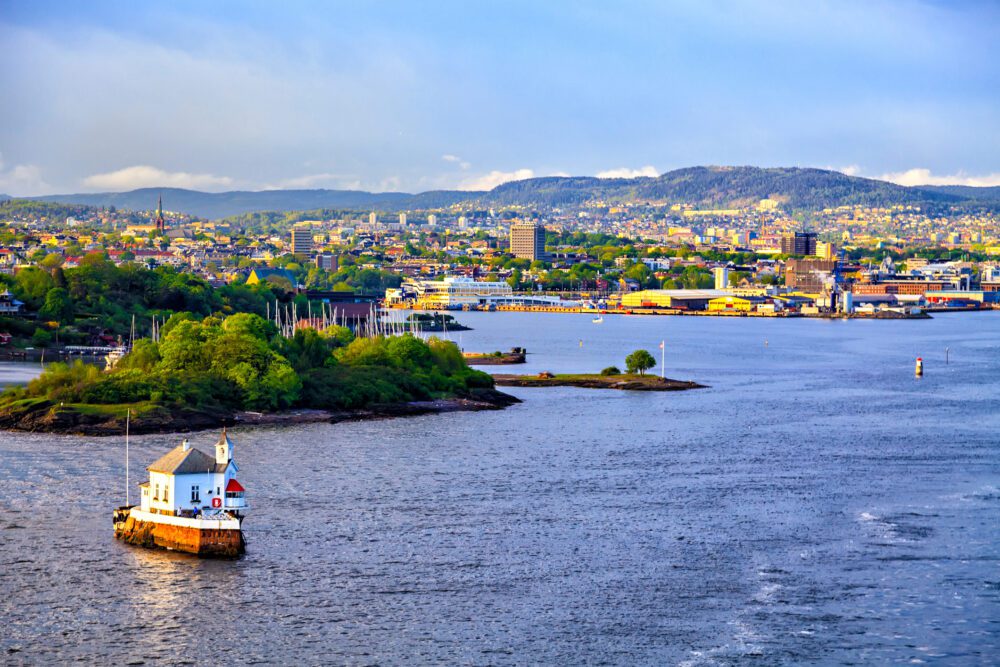
Embarking on an Oslofjord cruise offers an enchanting journey through Norway’s scenic coastal landscapes and rich maritime history. The Oslofjord, stretching over 100 kilometres from Oslo to the North Sea, has long been a vital waterway for trade, transportation, and recreation. A cruise along its tranquil waters provides visitors with panoramic views of picturesque islands, charming coastal villages, and lush greenery, offering a serene escape from the bustling city centre. Many Oslofjord cruises also include stops at various islands along the way, allowing passengers to explore their unique cultural heritage, natural attractions, and outdoor activities.
Practical tip: When planning an Oslofjord cruise and island hopping tour, consider booking a guided excursion that includes transportation, commentary, and sightseeing opportunities to make the most of your experience. Be sure to dress warmly and wear comfortable shoes, as temperatures on the water can be cooler, especially during the morning and evening hours. Don’t forget to bring along a camera or smartphone to capture the breathtaking scenery and wildlife encounters along the way. Additionally, consider visiting popular islands such as Hovedøya, Gressholmen, and Langøyene, which offer opportunities for hiking, picnicking, swimming, and exploring historic landmarks.
Akershus Fortress
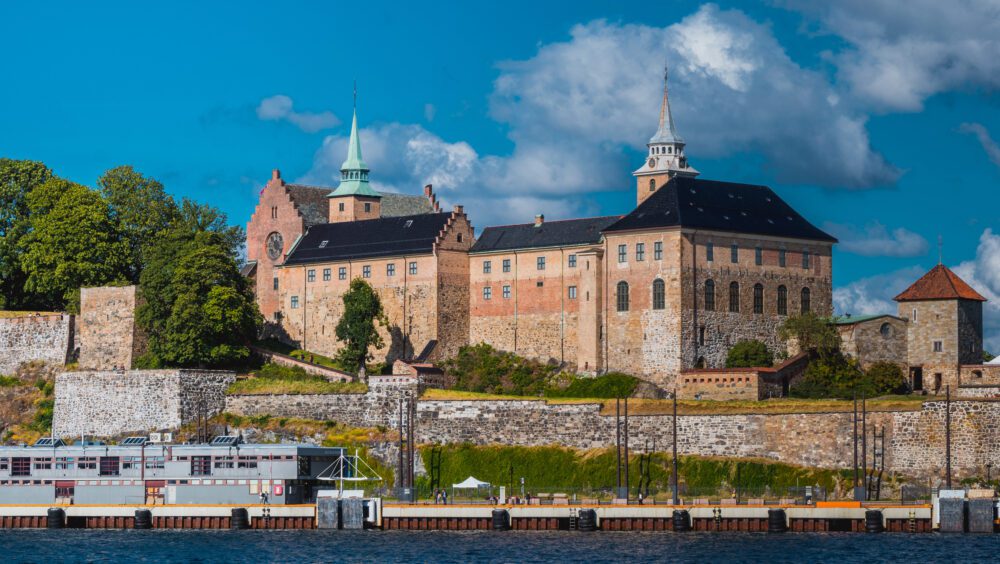
Akershus Fortress, perched majestically on a hill overlooking Oslofjord, stands as a symbol of Norway’s resilience and military prowess throughout history. Constructed in the late 13th century by King Haakon V, the fortress served as a strategic defensive stronghold to protect the capital city from maritime invasions. Over the centuries, Akershus Fortress played a pivotal role in numerous conflicts and power struggles, witnessing sieges, battles, and political intrigue. Today, visitors can explore the fortress’s well-preserved medieval walls, towers, and ramparts, as well as its historic buildings, including the Akershus Castle and the Norwegian Armed Forces Museum. Guided tours of the fortress offer insights into its fascinating history, highlighting key events and personalities that have shaped Norway’s past.
When visiting Akershus Fortress, be sure to wear comfortable walking shoes, as exploring its grounds may involve climbing stairs and uneven terrain. Consider joining a guided tour to learn more about the fortress’s history and significance from knowledgeable local guides. Don’t miss the opportunity to take in panoramic views of Oslofjord and the city skyline from the fortress’s vantage points, providing stunning photo opportunities. Additionally, be sure to check the fortress’s opening hours and admission fees in advance, as they may vary depending on the season and special events.
Oslo City Hall
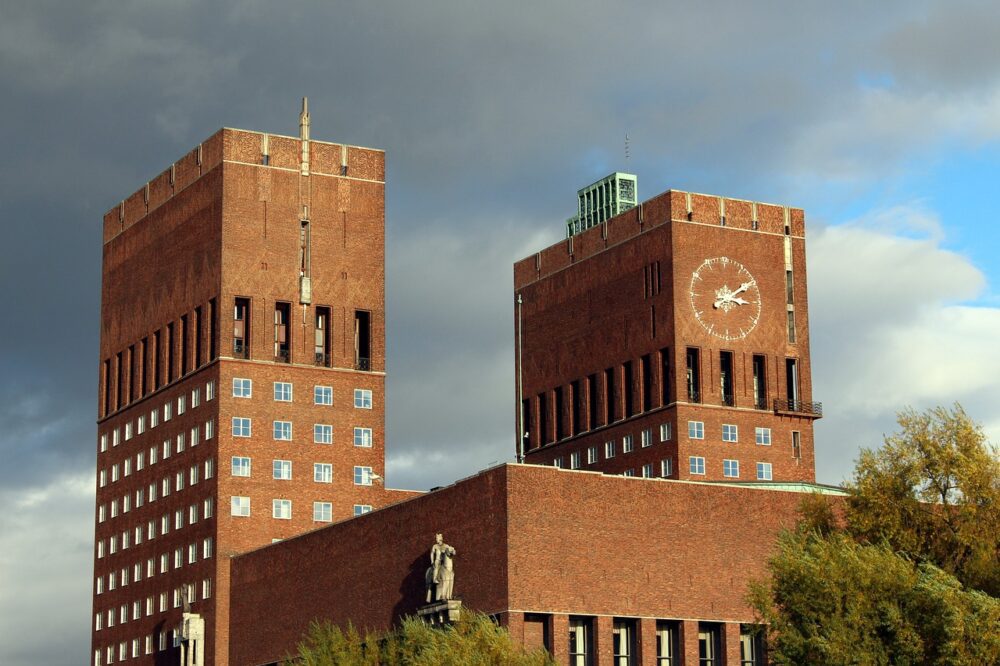
Oslo City Hall, a striking example of Norwegian functionalist architecture, stands as a testament to the city’s democratic values and cultural heritage. Completed in 1950, the City Hall serves as the seat of Oslo’s municipal government and a venue for official ceremonies, receptions, and cultural events. Designed by architects Arnstein Arneberg and Magnus Poulsson, the building’s exterior is adorned with intricate brickwork, towering spires, and sculptural reliefs that depict scenes from Norwegian history and folklore. Inside, the City Hall’s grand halls and chambers are decorated with vibrant murals, tapestries, and frescoes created by renowned Norwegian artists, including Henrik Sørensen and Alf Rolfsen. Visitors to Oslo City Hall can join guided tours to explore its interior and learn about its architectural significance, political history, and cultural significance.
When visiting Oslo City Hall, be sure to check the schedule for guided tours, which provide valuable insights into the building’s architecture, artwork, and role in Norwegian society. Consider attending one of the City Hall’s public events or exhibitions, which showcase local artists, musicians, and cultural organizations. Don’t miss the opportunity to admire the building’s stunning views of Oslofjord and the surrounding cityscape from its rooftop terrace, offering panoramic vistas that capture the essence of Oslo’s urban landscape. Additionally, take time to explore the City Hall’s surrounding area, which includes charming parks, waterfront promenades, and historic landmarks such as Aker Brygge and Akershus Fortress.
Aker Brygge
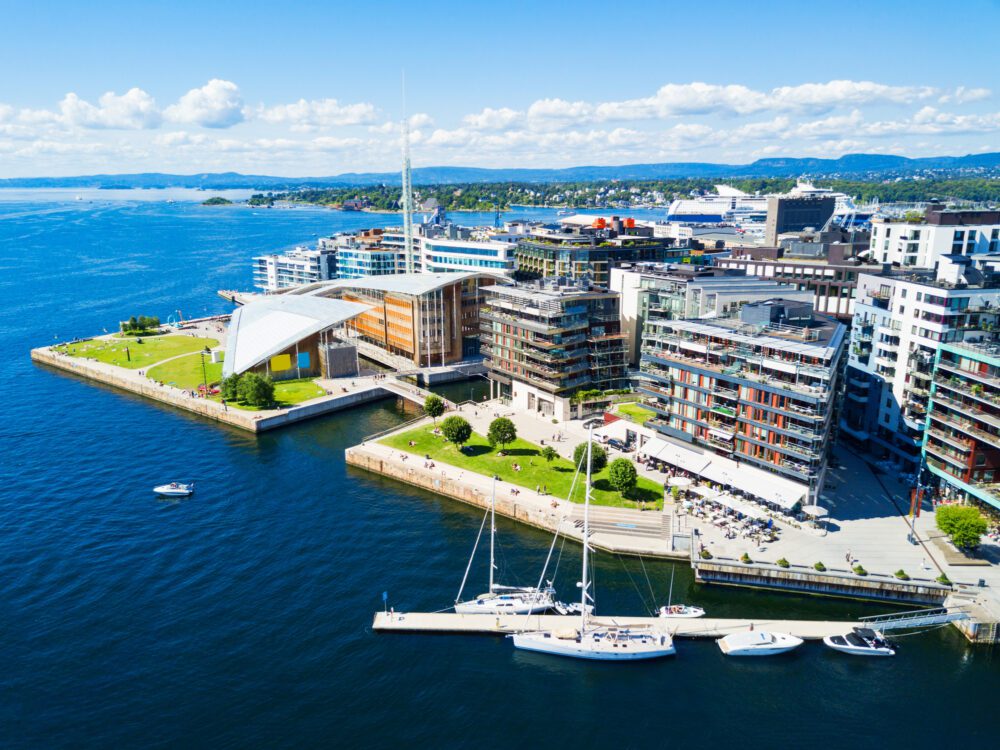
Aker Brygge, situated along the picturesque waterfront of Oslo, is a vibrant cultural and entertainment district that has undergone a remarkable transformation from its industrial roots. Once a bustling shipyard and industrial area, Aker Brygge has been redeveloped into a modern urban hub featuring a mix of shops, restaurants, cafes, art galleries, and waterfront promenades. The area’s revitalization began in the 1980s with the conversion of former industrial buildings into contemporary commercial and residential spaces, and it has since become one of Oslo’s most popular destinations for locals and tourists alike. Visitors to Aker Brygge can stroll along its scenic boardwalks, admire views of Oslofjord and the city skyline, and enjoy al fresco dining at waterfront eateries serving a variety of cuisines.
When exploring Aker Brygge, consider starting your visit at the Astrup Fearnley Museum of Modern Art, which showcases contemporary artworks by international artists and offers stunning views of the surrounding harbour. Be sure to take a leisurely walk along the boardwalks and quays, where you can browse boutique shops, relax in waterfront cafes, and watch boats coming and going from the nearby marina. Don’t miss the opportunity to sample fresh seafood at one of the area’s renowned seafood restaurants or indulge in traditional Norwegian delicacies at local eateries. Additionally, consider taking a boat tour of Oslofjord from Aker Brygge, which offers a unique perspective of the city’s waterfront landmarks and natural beauty.
Vigeland Sculpture Park

The Vigeland Sculpture Park, located within Oslo’s expansive Frogner Park, is a mesmerizing outdoor gallery showcasing the life’s work of renowned Norwegian sculptor Gustav Vigeland. Opened to the public in 1940, the park is the largest sculpture park in the world dedicated to a single artist, featuring over 200 sculptures crafted from bronze, granite, and wrought iron. Vigeland’s masterpieces depict the human experience in all its complexity, from joy and love to sorrow and despair, and explore themes of family, relationships, and the cycle of life. The park’s centrepiece is the iconic Monolith, a towering granite sculpture comprised of intertwined human figures rising skyward, symbolizing the unity and interconnectedness of humanity.
When visiting the Vigeland Sculpture Park, plan to spend ample time exploring its sprawling grounds and admiring its vast collection of sculptures. Consider starting your visit at the Visitor Centre, where you can learn about Gustav Vigeland’s life and artistic vision through informative exhibits and multimedia presentations. Be sure to pick up a park map to help navigate the sculptures and plan your route through the park. Don’t miss the opportunity to marvel at Vigeland’s most famous sculptures, including the iconic Angry Boy, the playful Fountain, and the contemplative Wheel of Life. Additionally, take time to relax and enjoy the park’s serene atmosphere, with its lush greenery, tranquil ponds, and scenic walking paths.
Norwegian Folk Museum

The Norwegian Folk Museum, located on the picturesque Bygdøy Peninsula in Oslo, offers visitors a captivating journey through Norway’s rich cultural heritage and traditional way of life. Founded in 1894, the museum is one of the oldest and largest open-air museums in the world, spanning over 150 acres of wooded parkland and featuring over 160 historic buildings from various regions of Norway. These meticulously preserved structures, including farmhouses, barns, and workshops, provide a fascinating insight into the daily lives, customs, and craftsmanship of Norway’s rural communities throughout history. Visitors to the museum can explore its immersive exhibitions, which showcase traditional costumes, handicrafts, and artefacts, as well as participate in interactive demonstrations and cultural events that bring Norway’s past to life.
Practical tip: When planning your visit to the Norwegian Folk Museum, allocate plenty of time to explore its extensive grounds and diverse exhibits. Consider joining a guided tour or taking advantage of the museum’s audio guide to enhance your experience and gain deeper insights into Norway’s cultural heritage. Be sure to check the museum’s schedule for special events and activities, such as folk music performances, craft demonstrations, and seasonal celebrations, which offer opportunities to engage with local traditions and customs. Don’t miss the chance to visit the museum’s iconic stave church, a stunning example of medieval Norwegian architecture, and stroll through its scenic outdoor areas, which feature gardens, meadows, and a picturesque lake.
Fram Museum and Kon-Tiki Museum
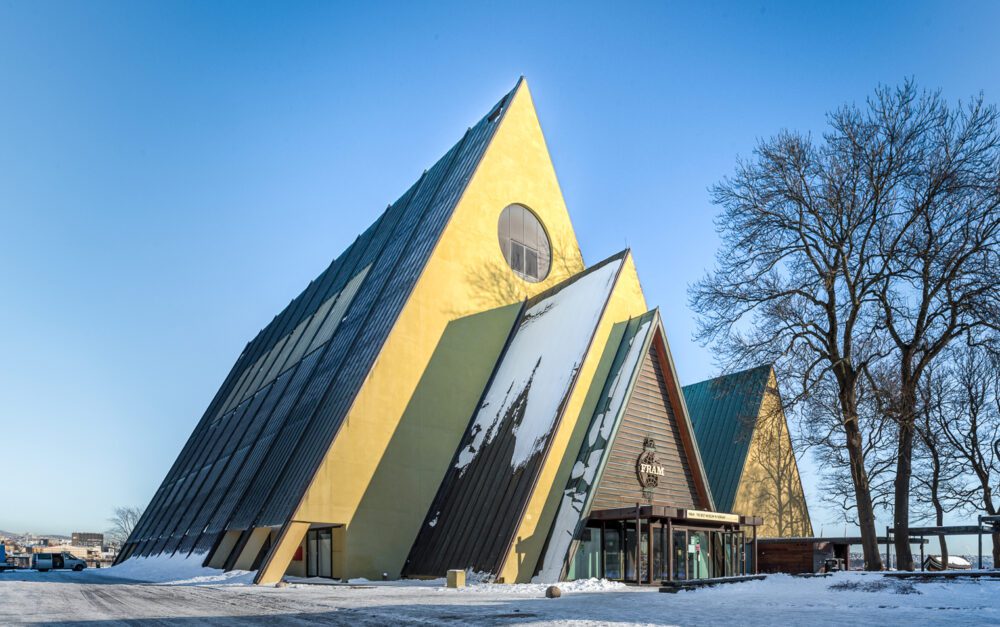
The Fram Museum and the Kon-Tiki Museum, both located on the Bygdøy Peninsula in Oslo, offer visitors a fascinating glimpse into Norway’s rich maritime history and exploration legacy. The Fram Museum, founded in 1936, is dedicated to the history of polar exploration and houses the world’s best-preserved polar exploration ship, the Fram. Built in 1892, the Fram was used by Norwegian explorers Fridtjof Nansen, Otto Sverdrup, and Roald Amundsen on their legendary expeditions to the Arctic and Antarctic. Visitors to the museum can explore the meticulously restored interior of the Fram, learn about the challenges and triumphs of polar exploration through interactive exhibits and multimedia presentations, and discover the stories of the brave men and women who ventured into the world’s most extreme environments.
Practical tip: When visiting the Fram Museum, allow ample time to explore its extensive collection of artefacts, photographs, and multimedia displays, which provide a comprehensive overview of Norway’s polar exploration history. Consider joining a guided tour or participating in one of the museum’s educational programs, which offer valuable insights into the science, technology, and culture of polar exploration. Don’t miss the opportunity to step aboard the Fram and imagine what life was like for the courageous explorers who sailed on her, or to visit the adjacent Gjøa building, which houses the polar ship Gjøa and showcases the achievements of Roald Amundsen’s Northwest Passage expedition. Additionally, be sure to visit the nearby Kon-Tiki Museum, which celebrates the daring exploits of Norwegian explorer Thor Heyerdahl and his legendary voyages aboard the Kon-Tiki and Ra II.
Oslo Botanical Gardens
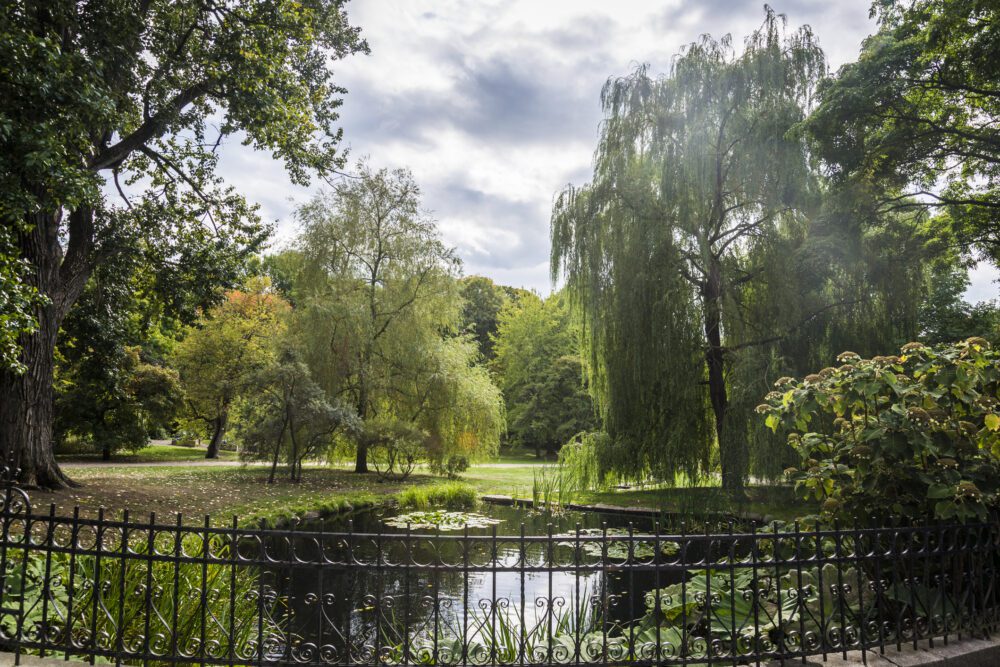
The Oslo Botanical Garden, nestled in the heart of the city near the University of Oslo, is a serene oasis brimming with lush greenery, vibrant flowers, and diverse plant species from around the world. Established in 1814, the garden serves as both a research institution and a public space for leisure and recreation. Its extensive grounds encompass a wide variety of themed gardens, including alpine, rock, herb, and perennial gardens, as well as a tranquil pond and arboretum. Visitors to the botanical garden can wander along its winding pathways, marvelling at the stunning array of plant life on display, from colourful blooms to towering trees. The garden also features several historic glasshouses, including a palm house and a tropical house, which provide shelter to exotic plant species and create a microcosm of different climates within the garden.
Practical tip: When exploring the Oslo Botanical Garden, consider bringing along a picnic to enjoy in one of its designated picnic areas or on the spacious lawns. Be sure to wear comfortable walking shoes, as the garden’s pathways can be uneven in some areas. Don’t miss the chance to visit the garden’s visitor centre, where you can learn about its history, collections, and ongoing research projects through informative exhibits and displays. Additionally, be sure to check the garden’s calendar for special events, guided tours, and workshops, which offer opportunities to learn more about gardening, botany, and conservation.
Grünerløkka

Grünerløkka, located on the east side of the Akerselva River in Oslo, is a vibrant and eclectic neighbourhood renowned for its bohemian atmosphere, artistic flair, and trendy boutiques, cafes, and galleries. Originally an industrial area during the 19th century, Grünerløkka underwent significant urban renewal in the late 20th century, transforming into a bustling cultural hub while still retaining its historic charm. The neighbourhood is characterized by its colourful 19th-century wooden houses, cobblestone streets, and tree-lined boulevards, creating a picturesque backdrop for leisurely strolls and exploration. Grünerløkka’s dynamic arts scene is evident in its many galleries, studios, and street art installations, reflecting the creative energy and diverse cultural influences that define the neighbourhood.
Practical tip: When visiting Grünerløkka, take time to wander along its charming streets and alleyways, discovering hidden gems such as vintage shops, artisanal bakeries, and independent bookstores. Be sure to explore Grünerløkka’s vibrant food scene, with its diverse array of cafes, restaurants, and food markets offering everything from gourmet cuisine to traditional Norwegian fare. Don’t miss the opportunity to relax in one of the neighbourhood’s cosy parks or green spaces, such as Grünerhagen or Sofienbergparken, which provide tranquil retreats from the urban hustle and bustle. Additionally, consider joining a guided walking tour of Grünerløkka to learn more about its history, architecture, and cultural significance from knowledgeable local guides.
Holmenkollen Ski Museum
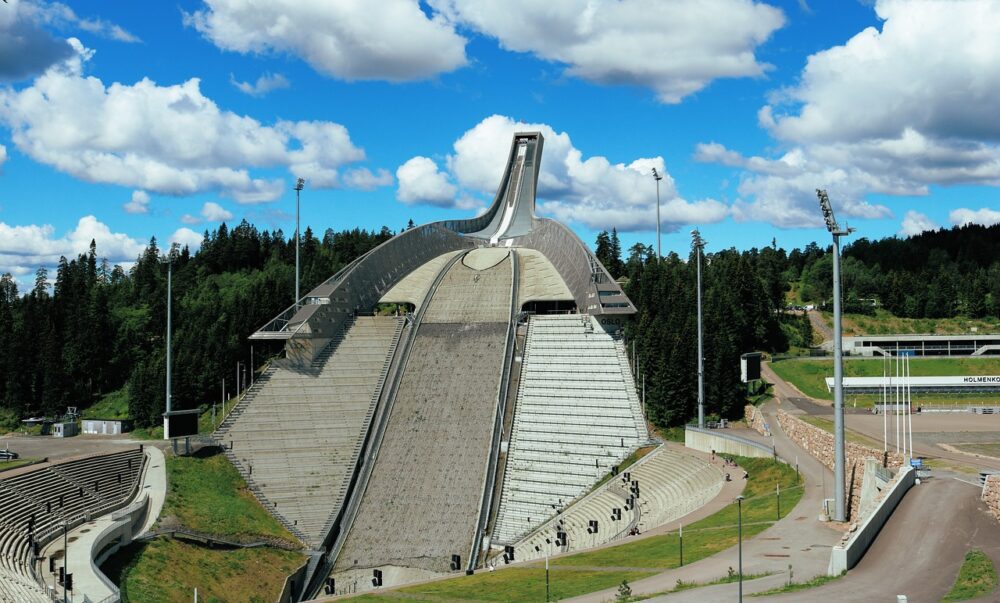
Holmenkollen, situated on the outskirts of Oslo, is a renowned district known for its iconic ski jump, breathtaking views, and outdoor recreational opportunities. The area’s history as a winter sports destination dates back over a century, with the first ski jumping competition held at Holmenkollen in 1892. Since then, Holmenkollen has become synonymous with skiing and ski jumping, hosting numerous world championships and Olympic events. The Holmenkollen Ski Jump, with its striking steel and glass design, is one of the most famous landmarks in Norway and offers visitors the chance to experience the thrill of ski jumping firsthand through virtual reality simulations. Additionally, the adjacent Holmenkollen Ski Museum and Ski Simulator provide fascinating insights into the history of skiing and winter sports, showcasing artefacts, memorabilia, and interactive exhibits that trace the evolution of the sport.
When visiting Holmenkollen, consider taking a guided tour of the ski jump and museum to learn more about its history and significance from knowledgeable local guides. Be sure to dress warmly, as the weather in Holmenkollen can be colder and windier than in the city centre, especially during the winter months. Don’t miss the opportunity to enjoy panoramic views of Oslo and the surrounding fjords from the top of the ski jump tower, which offers stunning photo opportunities. Additionally, consider exploring the nearby hiking trails and forested areas, which provide scenic walks and outdoor activities for nature enthusiasts.
Nordmarka

Nordmarka, the vast forested wilderness located just north of Oslo, is a paradise for outdoor enthusiasts seeking tranquillity and adventure amidst nature’s beauty. Spanning over 430 square kilometres, Nordmarka has been a beloved recreational area for Oslo’s residents for centuries, offering a wealth of hiking trails, pristine lakes, and scenic vistas. The history of Nordmarka dates back to ancient times when it was used for hunting, fishing, and gathering by indigenous Sami people. Over the centuries, Nordmarka has remained largely untouched by development, preserving its natural landscapes and biodiversity. Today, the area is protected as part of the Marka Nature Reserve and is a popular destination for hiking, skiing, cycling, and berry picking, providing a tranquil escape from the hustle and bustle of city life.
When exploring Nordmarka, it’s essential to come prepared with appropriate clothing, footwear, and supplies, especially if embarking on longer hikes or outdoor activities. Be sure to consult trail maps and signage before setting out, as Nordmarka’s network of trails can be extensive and varied in difficulty. Consider bringing along a picnic to enjoy at one of the many designated rest areas or scenic viewpoints scattered throughout the forest. Additionally, be mindful of wildlife and adhere to Leave No Trace principles to help preserve the area’s natural beauty for future generations.
Conclusion
Oslo presents itself as a dynamic and culturally rich city that seamlessly blends modernity with its deep-rooted historical heritage. From iconic landmarks like the Royal Palace and Oslo Opera House to immersive experiences in the Vigeland Sculpture Park and the Norwegian Folk Museum, the city offers a diverse range of attractions that cater to every interest and inclination. Whether wandering through the vibrant streets of Grünerløkka, marvelling at the architectural wonders of Aker Brygge, or venturing into the serene wilderness of Nordmarka, visitors are sure to find endless opportunities for exploration and adventure in Oslo.
Moreover, Oslo’s commitment to sustainability, innovation, and quality of life is evident in its green spaces, efficient public transportation system, and thriving cultural scene. With its scenic fjords, verdant parks, and bustling neighbourhoods, the city embodies the essence of Scandinavian charm and hospitality. Whether you’re a culture enthusiast, an outdoor adventurer, or simply seeking a memorable travel experience, Oslo invites you to discover its treasures and create lasting memories in one of Europe’s most captivating capitals.
